What started as a group of nomadic tribes became the Persian Empire, a revolutionary monarchy whose innovations have been used to this day.
The Persian Empire, now present-day Iran, was a series of dynasties that stretched from 6 BCE to 20 AD.
It includes areas in Iran, Egypt, Turkey and parts of Afghanistan and Pakistan.
However, after its decline, future rulers of Persia could not bring it back to its former glory.
Cyrus the Great
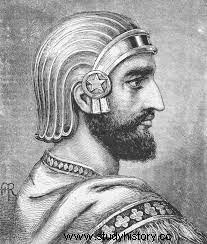
Although not the first ruler of the Persian Empire, but the third, Cyrus II of Persia (580 - 590 BC - December 4, 530 BCE) led the empire to its greatness.
He conquered the nearby median kingdom ruled by Astyages, his grandfather, in 553 BCE.
Then, after defeating Croesus, the Lydian king, in 546 BCE, he took control of the Aegean coast of Asia Minor (Antolia), Armenia, and then the Greek colonies along the Levant.
Moving east in 547 BCE, he captured Parthia (modern-day Khorāsān), Chorasmia (modern-day Uzbekistan), and Bactria (an area of Afghanistan, Uzbekistan, and Tajikistan).
When he captured Babylon in 549 BCE, he released the Jews who were being held captive, resulting in his immortalization in the book of Isaiah.
Originally called shah (king) of Persia, he eventually became Cyrus the Great.
What made him different from other rulers, including those in Persia, was the mercy he showed towards the cities and kingdoms he conquered.
By sparing the lives of defeated kings, they successfully guided him to rule over his subjects.
In addition, he practiced religious and cultural tolerance towards the conquered people.
The first Persian Empire became the Achaemenid Empire, the world's first superpower under Cyrus the Great.
In addition, this system of government united three ancient sites of human civilization:Mesopotamia, the Nile Valley in Egypt, and the Indus Valley in India.
Darius I
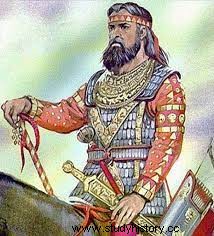
The fourth emperor of the Achaemenid Empire, later known as Darius the Great (550 BCE - October 486 BCE), ruled Persia at its greatest.
At this time, Persia was expanding from the Caucasus (the region between the Black Sea and the Caspian Sea) and West Asia to Macedonia (Balkans), the Black Sea, Central Asia, Africa and parts of Libya and Egypt.
Darius the Great saw that the expansion of the great empire needed the right structure and organization to function effectively.
He created a system of provinces, governors, and a postal service throughout the empire to create widespread communication.
In addition, he introduced standard currencies, weights and targets and used the tribute money from each province to fund public works, such as building roads and canals.
He further united Persia by making Aramaic the official language.
Social hierarchy
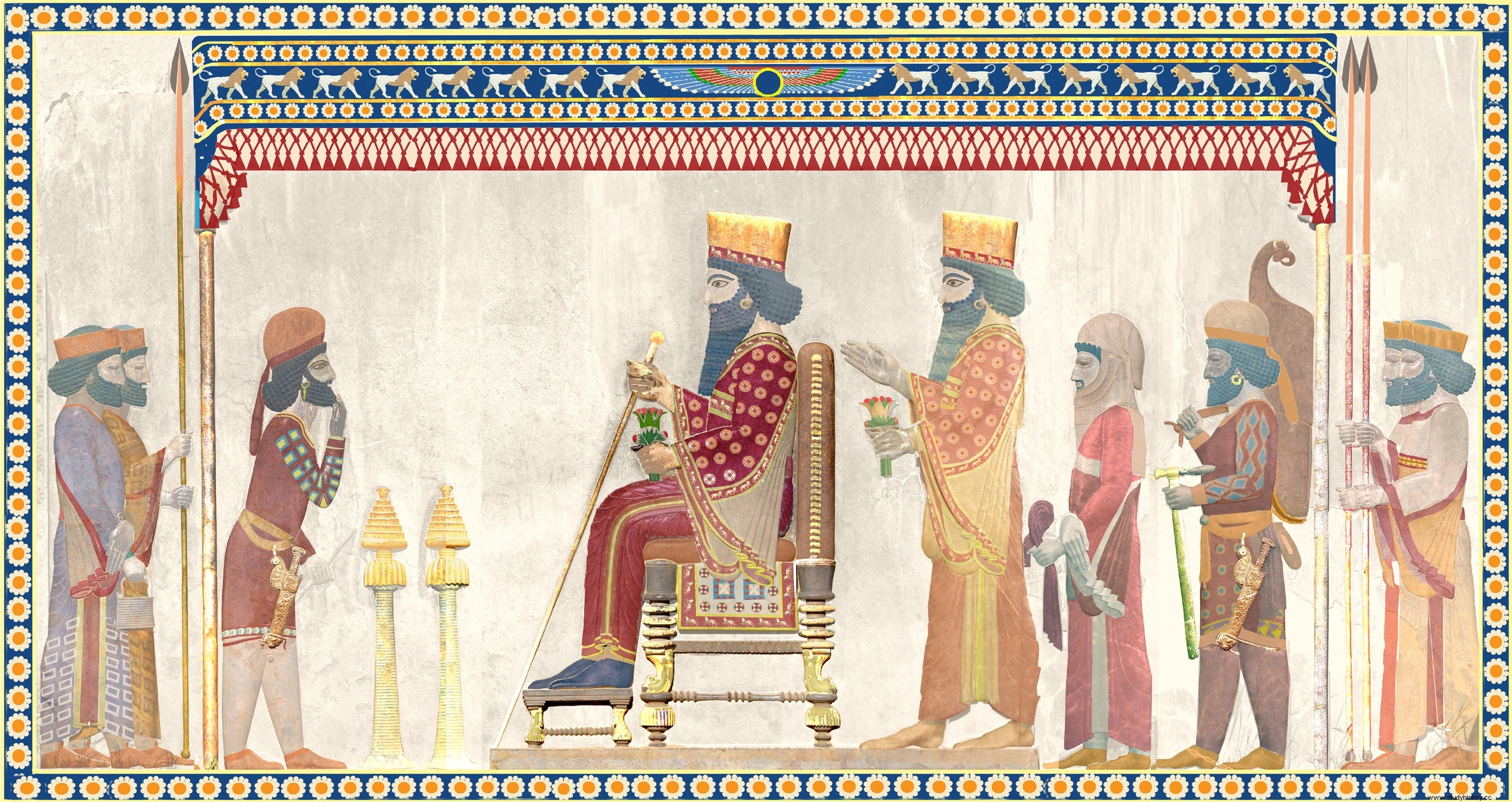
Religious belief formed the hierarchy of Persia. The emperor was at the top when he was divinely appointed.
As long as the emperor kept his divine grace, the social hierarchy continued to support him.
If the emperor was overthrown, it meant that he lost his favor with God.
The Emperor and the Royal Family
It was a hierarchy in the royal family.
It begins with the emperor, then the emperor's mothers, the queen (the mother of the emperor's chosen successor), the emperor's sons, his daughters, brothers, sisters, and finally other relatives.
Regardless of their own hierarchy, the emperor and the royal family were the most driven social class.
The majority of the family was blood related to the emperor. The emperors adopted as their own were also part of the royal family.
Prester ( Magi )
Within this class there was a high priest and lower priests.
A high priest performed sacred rituals and was responsible for divination and banking. They acted as a mediator between humans and one or more deities.
As for decisions made by the emperor, they could interfere or question them.
Their orders were sacred orders because of their positive connection with the deity or gods of Persia.
A high priest hired the lesser priests to take on the role of bankers. They offered loans with an interest rate of 20%. Depending on the reasons, they rejected the interest.
Homes, land, livestock, businesses and slaves could be bought on credit offered by the priests, as the expected return on investment.
Nobles - Arisocrats and Satraps
These were well-known citizens and councilors who advised the emperor to rule the kingdom.
Satraps (governors) were the emperor's representatives in satrapies (provinces) of the empire.
They ruled for life and lived well in their own palaces as long as they pleased the emperor.
The emperor expected them to collect, collect taxes, raise soldiers for military campaigns and participate in military campaigns. This made it difficult to distinguish between Satraps and the military.
Military
Being part of the military was an honor.
With their families, the Persian government gave the military special benefits and honor.
Merchants
A middle class of people who enjoyed their benefits.
The more successful a trade was, the richer the merchants became.
Craftsmen and CraftsmenPeople who specialized in making functional and decorative pieces.
They were employed on many projects, for example:
- Sculpt reliefs on homes, buildings and palaces.
- Fashion statues.
- Make jewelry.
- Forging weapons and armor.
- Make thanks for horses.
- Give people plates, jars and bowls.
Craftsmen can also be entertainers, such as musicians, dancers and mime.
farmers
A traditional peasant class, they were either workers or owners of small farms.
Like most empires, peasants were the backbone of the economy.
In some cases, satraps encouraged them to take part in Persian warfare as soldiers or baggage holders or other supporting roles.
Slave
At the lowest level, slaves had the least number of privileges.
However, slave owners treated them as paid servants. Masters could not beat or kill their slaves for no reason.
During the reign of Darius the Great, he made a law that if a master abused a slave, the master would face the same punishments as someone would if they harmed a free man.
Although they had no rights, they were compensated for their work, shelter, clothing and lived better under the Persians.
Women in the social hierarchy
In the Persian Empire, men and women worked the same jobs.
Women were highly respected in all classes.
They served as mentors and some were entitled arashshara (high boss).
Female artisans supervised shops, created goods for daily use and trade, and paid the same as their male counterparts.
Pregnant women and those who had just given birth received higher wages.
The only discrepancy between the sexes is that if a woman gave birth to a son, she and the attending physician received extra rations for a month.
They could own land, run businesses, and there is even evidence that they served in the army.
Economy of the Persian Empire
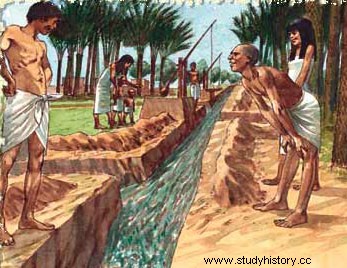
The Persian economy was a successful system that grew over time due to the labor system, trade routes and agriculture.
As the economy grew, the Persians trained with new techniques in agriculture and to improve the economy.
In the beginning, the Persian Empire was not as prosperous as it used to be.
However, they had one advantage:access to land and sea roads for trade.
In addition, agriculture, the economic base of the Persian Empire, benefited from improvements from the Achaemenid Empire.
The empire was covered by huge estates owned by the monarchy, the nobility, temples and even business houses. Country crops included barley, beans, grapes and sesame seeds and flax.
Persian rulers brought in merchants through their trade routes and used these routes to export their products.
The trade routes extended to present-day India, the coast of Turkey and through the Levant and Egypt.
During the reign of Darius the Great, a network of roads was built. It made trade and maritime trade easier and therefore prosperous.
In addition, he had a canal built in Egypt to connect the Nile to the Red Sea to expand trade routes. According to historians, the channel is still incomplete.
Religion
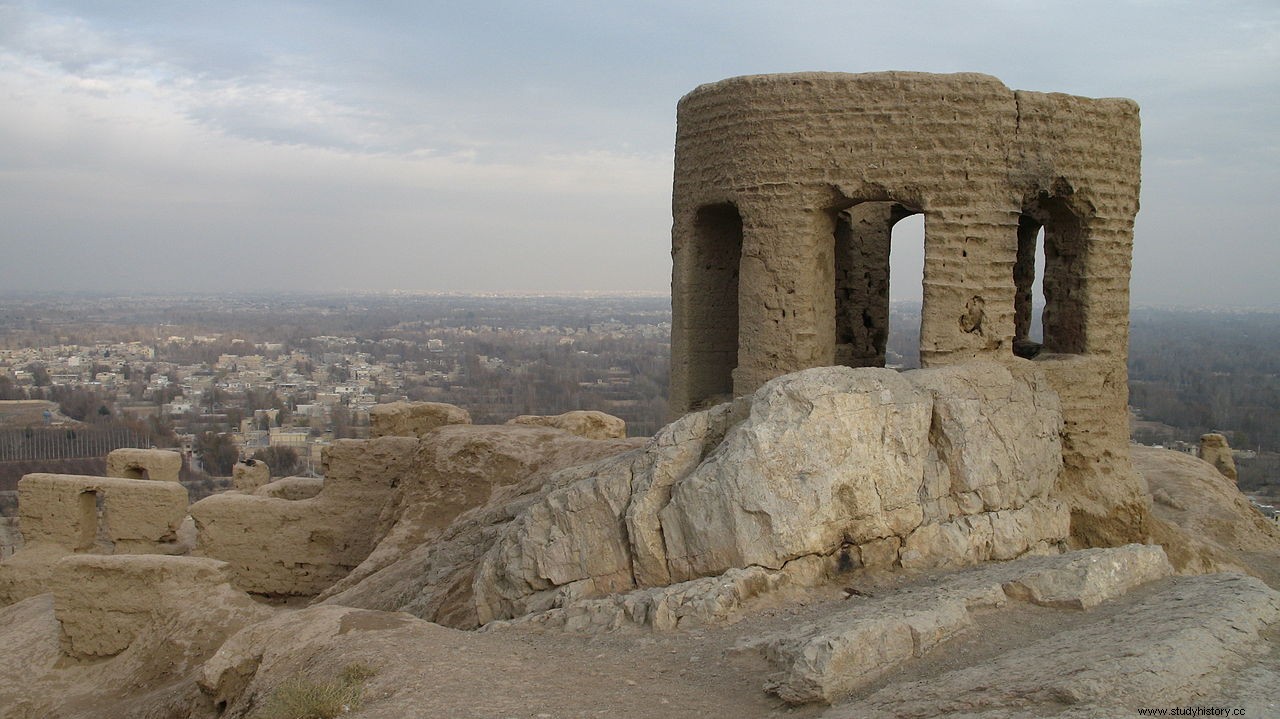
The ancient Persians followed Zoroastrianism, named after the prophet Zoroaster, who originated nearly 4,000 years ago.
Many consider Zoroaster to be the founder of the world's oldest monotheistic faith.
Everything that is known about the religion comes from a collection of Zoroastrian religious writings, the Avesta .
Zoroastrianism shaped the Persian Empire and remained a state religion of three major Persian dynasties.
Cyrus the Great was a devout Zoroastrian and governed by the Zoroastrian law Asha , truth and justice. He did not impose religion on the people of the conquered territories of Persia.
Its faith spread across Asia through the Silk Road, from China to the Middle East and Europe.
In the next millennium, Zoroastrianism dominated two dynasties until the Arab conquest of Persia in 7 AD
After the invasion, a group of Iranian Zorastrias emigrated from Persia to escape religious persecution.
The Arab invaders charged the Zoroastrians in Persia with additional taxes for their continued pursuit of their religious practices.
In addition, they implemented laws to make life difficult for them.
Soon, more Iranian Zoroastrians converted to Islam.
Parsi became known as followers of Zoroastrians in India and Pakistan. Today, there are around 60,000 in India and 1,400 in Pakistan.
Unfortunately, many who follow religions derived from Zoroastrianism are still persecuted, such as the Yazidis.
Persian culture
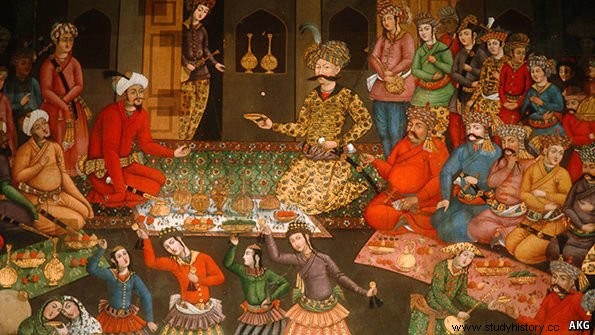
Cyrus the Great believed in the importance of accepting and embracing others. He encouraged a culture based on the recognition and appreciation of different beliefs, customs and values.
Persian culture is one of the oldest and richest cultures in the world.
It influenced the cultures of Italy, Macedonia, Greece, Russia, the Arabian Peninsula and parts of Asia.
Despite the Arab invasion, the Persians maintained their cultural identity through their language, literature and art.
Language
The Persians spoke Farsi.
Today it is one of the most prominent languages in the Middle East and its enlarged regions. It is still spoken in today's Iran, Afghanistan, Tajikistan and the Pamirs mountains.
In addition, it became a literary instrument for many poems and religious works.
Persian poetry
The Persians created some of the most beautiful poems in the world. They even created four types of poetry, each unique from the other:
- The epic.
- The ghasideh , a purposeful poem.
- The masnavi , a narrative poem.
- The ghazal , a lyrical poem.
Persian art
Persian art is one of the richest art heritage in the world, and includes architecture, painting, weaving, ceramics, calligraphy, metalwork and sculpture.
Persian rugs are masterfully woven rugs and the finest rugs known worldwide.
What makes them incredibly unique is that it takes over a year to make these handmade rugs. A finished rug has over one million knots. Even the most skilled weavers can only tie 12,000 knots a day.
When it comes to Persian calligraphy, Nas'taliq is the most popular style among classical Persian calligraphy.
Known as the 'Bride of the Calligraphy Scripts', Mir Ali Tabrizi, an excellent 14 th century Persian calligraph, created Nas'taliq by combining two great scripts from his time: Nashk and Taliq .
In addition, Persian miniature is a well-detailed miniature painting depicting religious or mythological themes. It bloomed from 13 th to 16 th centuries, continued to this day, creating a visual image of a literary plot, making it fun and easy to understand.
Persian inventions
Among their inventions, such as backgammon, chess and polo, the Persian innovations and inventions are still used today and shaped generations.
The cartar and sestar are the predecessors of the guitar.
They created miming as a way to tell a story on any subject to other nations without being hindered by language barriers.
Yahkchal , the first refrigerators, were tall ceramic domes with an underground storage space that produced ice and kept food cold.
A qanat was an irrigation system that provided food for crops, the economic base of Persian trade.
It was also used to create decorative and elaborate gardens for palaces and private homes, known as pairi-daeza , the original word for 'paradise' in English.
From an Empire to a Republic
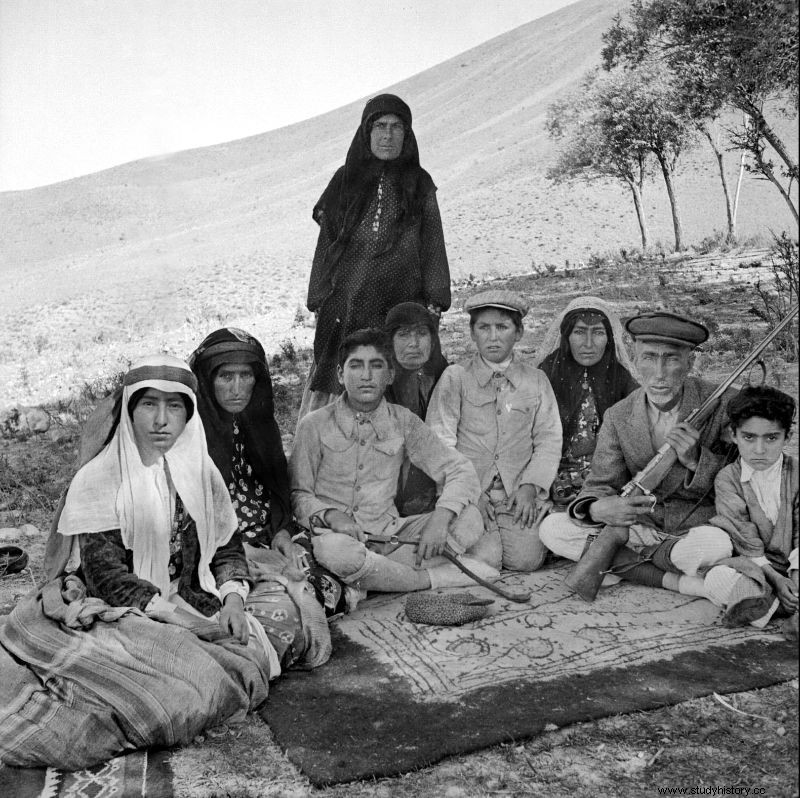
During the reign of Xerxes I (518 BCE - August 456 BCE), son of Darius the Great, the Archemenid Empire faced a period of decline.
Xerxes led a failed campaign to invade Greece. The costly defense of Persian lands drained the empire's resources, resulting in heavy taxes among Persian subjects.
When he returned home, he continued his irresponsible expenses.
As a result of his actions, Xerxes emptied the royal treasury.
The Achaemenid dynasty fell during an invasion led by Alexander the Great of Macedon in 330 BCE
Future rulers of Persia tried to restore the Persian Empire to what it once was.
However, the empire never returned to its former glory as it achieved under Cyrus the Great.
Persia to Iran
The world knew Iran as Persia long after the invasions of Alexander the Great and the Arabs.
However, this changed in 1935 when the Persian government asked the countries with which it had diplomatic relations to call Persia its Persian name, 'Iran'.
Many believed that the Iranian ambassador to Germany brought this change.
Germany and countries with Aryan decency had good relations.
Aryan refers to a member or descendant of the early speakers of Indo-European languages who settled in Persia and the northern Indian subcontinent.
To mark the changes that were to come under Reza Shah's new rule, as well as Persia's freedom from British and Russian rule, it became Iran.
'Iran' is related to the word 'Aryan', to include the country's population of the Aryan race and all ethnicities in the country, as well as Persians.
Significance in Cultural Anthropology
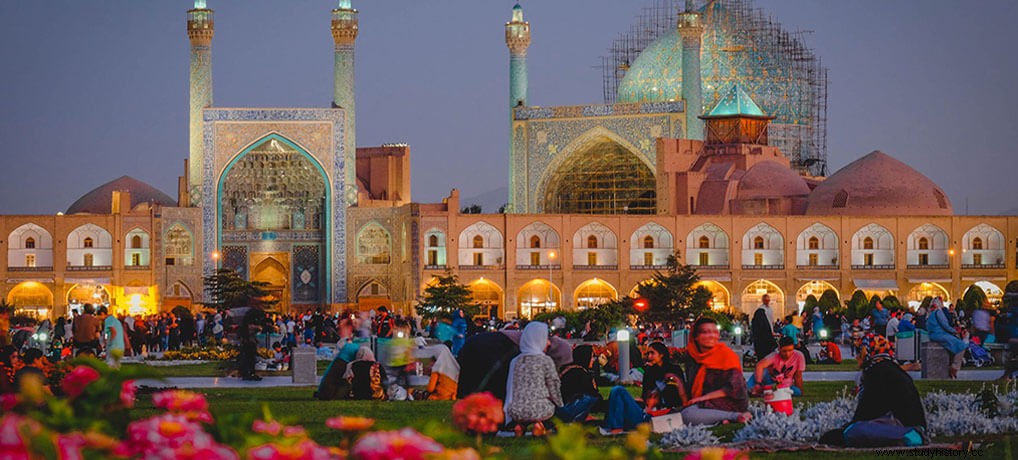
The Persian Empire was once the world's most powerful empire, setting the pace for future innovations.
Its culture lives on in its architecture and artwork to inspire the present about the past and their inventions made for modern times.
Empires dissolve and people disappear, song does not disappear.
- William Watson.
